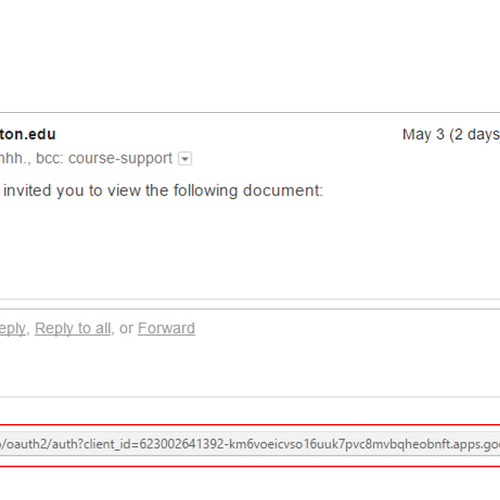Phishing Incidents
Phishing is a fraudulent attempt to get information via email. Like fishing, phishing relies on using tempting bait to reel you in. Phishers use email to manipulate you to get what they want. Often phishing messages attempt to make you reveal personal information, such as account numbers or passwords. Sometimes they use infected attachments or other scams.
Google Phishing Scam (5/3/17)
In a recent case that targeted Google accounts worldwide, the hackers were after the contacts so they could further spread the phish.
Legitimate request to share a document
Phishing Scam
What we can all learn from this
- Always double and triple check links, invitations and attachments before you click, even if the email appears to come from someone you know. Call the person if you are unsure.
- Read before you click - this scam required two clicks with the second asking for access to your Google resources.
- Report incidents to the LITS Help Desk, helpdesk@hamilton.edu or 315-859-4181
If you see something, say something. - Enable Google 2 step authentication: https://www.hamilton.edu/
offices/lits/rc/2-step- verification. Even though it would not have prevented this particular attack, it will protect you if your username/password are compromised.
Contact
Contact Name
Jerry Tylutki
Director of Information Security and Privacy
Phone
Email


